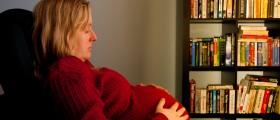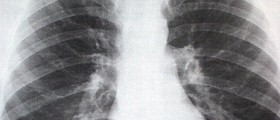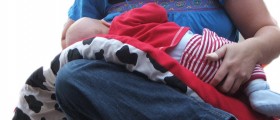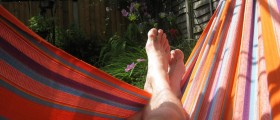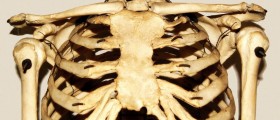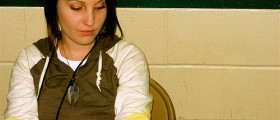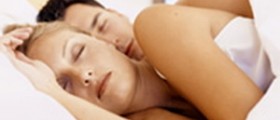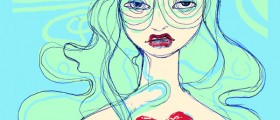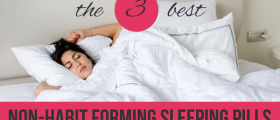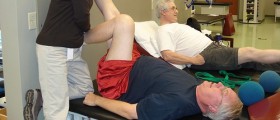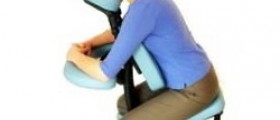I know that it can drive you nuts when you get the pains and wakes me when i sleep sometimes...
Not sure what the dr has planned next, maybe mri or something.
I think after all these tests, i will start to glow at night...lol
Loading...
Im 15 and i can sleep on either side and wake up and if i breathe to fast my chest and back hurt but if i sleep on my back i tend to mot have the problem as much, i have tried hoT baths to relax my muscles and it worked for the night also used some pain relievers and they helped some but not much
Loading...
I actually just went into this Doctor yesterday and this is what they said it was "Conjunctival inflammation and heartburn" they prescribed Zantac for the heartburn and a lipoderm patch for the sternum pain. It was also stated that icing the sternum helps to if your insurance provider will not cover the patch. The Doctor stated that laying on you side adds extra pressure to your sternum. All your weight from you shoulders and upper body fall to the sternum leaving an inflammation in the cartilage that gives the immense tightness and burning sensation. She also said that if you are a side sleeper get a body pillow to hug at night or lay a pillow behind your back so when you body relaxes it has somewhere to put the extra weight. Hope this helps, it helped for me last night and no pain this morning :)
Loading...
the problem is with your sleeping posture. when you support your head with your hands up and stay like that for hours during your sleep.
Loading...
I just recently went to the hospital, soon discovered some of my chest and upper abdominal pains were due to the fact I had gastritis (inflammation of the stomach lining) The same night I was diagnosed with gastritis, I fell asleep on my sides (left and right) and realized it was a mistake because it caused chest pains. I don't believe it's anything serious, but it my have something to do with gastritis, but as far as pain goes, it probably made my chest pains somewhat worse. Don't be scared to talk to your doctor, I actually highly recommend it to find the source of what might be causing the chest pain. It's definitely scary to feel this way because it can be anything from your lungs, heart, esophagus, etc. In my case it was the esophagus (more common for younger people I believe) I had irritated it with stomach acid after vomiting so much. That can sometimes lead to some pain starting from the upper abdomen, slowly working its way through your chest into your throat. If that is similar to your pain in any way, I'd advise you change your sleeping posture. Never lay on your sides and raise the back of your bed, or pillows, so that your elevated. If that has no affect, then I suggest you go see your doctor as soon as possible.
Hope all is well,
Guy
Loading...
Loading...
Loading...
Loading...
I've had this problem for many years and I'm not overweight. If I sleep on either side, I wake up with severe chest pains. I've mentioned it to doctors, and they don't seem to even respond
Loading...
I am 44 years old and I am a side sleeper. I can only sleep on my right side . I must hug a pillow, in fact two pillows, when I sleep. If I don't hug the pillows then I will have sternum pain for the next 24 to 48 hours. It is not just sternum pain but more like chest pain. Every muscle and bone in my chest hurt. I also have GERD and I take Nexium every night before going to sleep. Whenever I get this chest pain, I feel like I am having a heart attack and I keep second guessing myself if I should go to the emergency or not.
Loading...
I have exactly the same thing. I've had it for a few years now. I think it is from an injury as when I turn over on my back it goes away and doesn't hurt when I lay on my left side. When I lift heavy objects that day, it hurts more, so I think it is a previous injury and now arthritis. I'm going to the doctor to find out what it is.
Loading...
Loading...
Hey everyone, this is called Costochondritis. Costochondritis is an inflammatory process of the costochondral or costosternal joints that causes localized pain and tenderness.
"The onset of costochondritis is often insidious. Chest wall pain with a history of repeated minor trauma or unaccustomed activity (eg, painting, moving furniture) is common. Pain may be described as follows:
* Exacerbated by trunk movement, deep inspiration, and/or exertion
* Lessens with decreased movement, quiet breathing, or change of position
* Sharp, nagging, aching, or pressurelike
* Usually quite localized but may extend or radiate extensively
* May be severe
* May wax and wane
Pain with palpation of affected costochondral joints is a constant finding in costochondritis.
o The second through the fifth costochondral junctions typically are involved. More than one junction is involved in more than 90% of patients.
o Surprisingly, patients may not be aware of the chest wall tenderness until examination.
The diagnosis should be reconsidered in the absence of local tenderness to palpation.
o Tietze syndrome is characterized by nonsuppurative edema.
o Costochondritis has no palpable edema.
The etiology of costochondritis is not well defined. Repetitive minor trauma has been proposed as the most likely cause.
Differential diagnoses include:
* Blunt abdominal trauma
* Acromioclavicular injury
* Anxiety
* Gout and Pseudogout
* Herpes Zoster
* Myocardial Infarction
* Neoplasms of the lung
* Sternoclavicular joint injury
The goal of therapy is to reduce inflammation. To accomplish this goal, nonsteroidal anti-inflammatory drugs (NSAIDs) are useful. Additional treatment steps may also include:
* Local heat
* Local infiltration of local anesthetic, steroid, or intercostal nerve block (reserved for refractory cases)
* Biofeedback
* Gentle stretching of the pectoralis muscles 2-3 times a day may be beneficial
* Primary care follow-up with persistent symptoms
Preventative measures include:
* Avoid repetitive misuse of muscles.
* Modify improper posture or ergonomics of the home or work place."
***this post is edited by moderator *** *** web addresses not allowed*** Please read our Terms of Use
